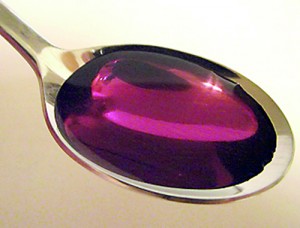Sunday Times 2
Could a liquid brain implant make us more intelligent?
Human brain implants that act as an internal ‘Google search’ have come a step closer to reality after researchers found a way of storing data in liquid.
Scientists in the U.S. claim to have discovered a technique to lock away photos, videos and other documents in tiny particles suspended in water.

It is thought that just a spoonful of liquid containing these nanoparticles could store up to a terabytes worth of data - enough to store 2,000 hours of audio ('Coughsyrup' /Stickpen)
The technology, known as ‘wet computing,’ could someday be used in the brain allowing humans to make rapid calculations or recall more information.
Scientists at the University of Michigan were able to store the information in something known as ‘colloidal clusters’, tiny particles that move states when placed in liquid.
The change of state in these particles can be used to encode the same 1s and 0s stored on solid hard drive technology today, the researchers claim.
It is thought that just a spoonful of liquid containing these nanoparticles could store up to a terabyte’s worth of data – enough to store 2,000 hours of audio.
‘We wanted to demonstrate that it would be possible to store information in a new way that’s different to traditional silicon chips by using nanoparticles,’ Sharon Glotzer, a chemical engineer told Anthony Cuthbertson at IBTimes UK.
If scientists could count all of those different patterns and understand how to go from one state to another, then it would be possible to encode information, Professor Glotzer explained.
The team created a cluster involving four particles on a central sphere. By heating the liquid up, the spheres grew and the particles rearranged themselves in expected ways.
For liquid storage to become a practical reality, the team needs to find a way to lock the clusters into the correct shapes across larger volumes of liquid.
As well as boosting brain power, a more immediate use of the technology could be to create biocompatible sensors that could, for instance, monitor glucose levels in people with diabetes.
© Daily Mail, London

